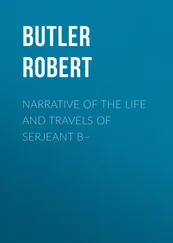Robert Vane Russell - The Tribes and Castes of the Central Provinces of India, Volume 4
Здесь есть возможность читать онлайн «Robert Vane Russell - The Tribes and Castes of the Central Provinces of India, Volume 4» — ознакомительный отрывок электронной книги совершенно бесплатно, а после прочтения отрывка купить полную версию. В некоторых случаях можно слушать аудио, скачать через торрент в формате fb2 и присутствует краткое содержание. Жанр: foreign_prose, История, foreign_edu, foreign_antique, на английском языке. Описание произведения, (предисловие) а так же отзывы посетителей доступны на портале библиотеки ЛибКат.
- Название:The Tribes and Castes of the Central Provinces of India, Volume 4
- Автор:
- Жанр:
- Год:неизвестен
- ISBN:нет данных
- Рейтинг книги:4 / 5. Голосов: 1
-
Избранное:Добавить в избранное
- Отзывы:
-
Ваша оценка:
- 80
- 1
- 2
- 3
- 4
- 5
The Tribes and Castes of the Central Provinces of India, Volume 4: краткое содержание, описание и аннотация
Предлагаем к чтению аннотацию, описание, краткое содержание или предисловие (зависит от того, что написал сам автор книги «The Tribes and Castes of the Central Provinces of India, Volume 4»). Если вы не нашли необходимую информацию о книге — напишите в комментариях, мы постараемся отыскать её.
The Tribes and Castes of the Central Provinces of India, Volume 4 — читать онлайн ознакомительный отрывок
Ниже представлен текст книги, разбитый по страницам. Система сохранения места последней прочитанной страницы, позволяет с удобством читать онлайн бесплатно книгу «The Tribes and Castes of the Central Provinces of India, Volume 4», без необходимости каждый раз заново искать на чём Вы остановились. Поставьте закладку, и сможете в любой момент перейти на страницу, на которой закончили чтение.
Интервал:
Закладка:
In Mandla at a wedding the barber comes and cuts the bride’s nails, and the cuttings are rolled up in dough and placed in a little earthen pot beside the marriage-post. The bridegroom’s nails and hair are similarly cut in his own house and placed in another vessel. A month or two after the wedding the two little pots are taken out and thrown into the Nerbudda. A wedding costs the bridegroom’s party about Rs. 40 or Rs. 50 and the bride’s about Rs. 25. They have no going-away ceremony, but the occasion of a girl’s coming to maturity is known as Bolāwan. She is kept apart for six days and given new clothes, and the caste-people are invited to a meal. When a woman’s husband dies the barber breaks her bangles, and her anklets are taken off and given to him as his perquisite. Her brother-in-law or other relative gives her a new white cloth, and she wears this at first, and afterwards white or coloured clothes at her pleasure. Her hair is not cut, and she may wear patelas or flat metal bangles on the forearm and armlets above the elbow, but not other ornaments. A widow is under no obligation to marry her first husband’s younger brother; when she marries a stranger he usually pays a sum of about Rs. 30 to her parents. When the price has been paid the couple exchange a ring and a bangle respectively in token of the agreement. When the woman is proceeding to her second husband’s house, her old clothes, necklace and bangles are thrown into a river or stream and she is given new ones to wear. This is done to lay the first husband’s spirit, which may be supposed to hang about the clothes she wore as his wife, and when they are thrown away or buried the exorcist mutters spells over them in order to lay the spirit. No music is allowed at the marriage of a widow except the crooked trumpet called singāra . A bachelor who marries a widow must first go through a mock ceremony with a cotton-plant, a sword or a ring. Divorce must be effected before the caste panchāyat or committee, and if a divorced woman marries again, her first husband performs funeral and mourning ceremonies as if she were dead. In Gujarāt the practice is much more lax and “divorce can be obtained almost to an indefinite extent. Before they finally settle down to wedded life most couples have more than once changed their partners.” 120 120 Bombay Gazetteer, Gujarāt Hindus, loc. cit.
But here also, before the change takes place, there must be a formal divorce recognised by the caste.
6. Funeral rites
The caste either burn or bury the dead and observe mourning for three days, 121 121 In Berār for ten days—Kitts’ Berār Census Report, l.c.
having their houses whitewashed and their faces shaved. On the tenth day they give a feast to the caste-fellows. On the Akshaya Tritia 122 122 3rd Baisākh (April) Sudi, commencement of agricultural year.
and the 30th day of Kunwār (September) they offer rice and cakes to the crows in the names of their ancestors. In Berār Mr. Kitts writes: 123 123 Berār Census Report, l.c.
“If a Mahār’s child has died, he will on the third day place bread on the grave; if an infant, milk; if an adult, on the tenth day, with five pice in one hand and five betel-leaves in the other, he goes into the river, dips himself five times and throws these things away; he then places five lighted lamps on the tomb, and after these simple ceremonies gets himself shaved as though he were an orthodox Hindu.”
7. Childbirth
In Mandla the mother is secluded at childbirth in a separate house if one is available, and if not they fence in a part of the veranda for her use with bamboo screens. After the birth the mother must remain impure until the barber comes and colours her toe-nails and draws a line round her feet with red mahur powder. This is indispensable, and if the barber is not immediately available she must wait until his services can be obtained. When the navel-string drops it is buried in the place on which the mother sat while giving birth, and when this has been done the purification may be effected. The Dhobi is then called to wash the clothes of the household, and their earthen pots are thrown away. The head of the newborn child is shaved clean, as the birth-hair is considered to be impure, and the hair is wrapped up in dough and thrown into a river.
8. Names
A child is named on the seventh or twelfth day after its birth, the name being chosen by the Mohtūria or caste headman. The ordinary Hindu names of deities for men and sacred rivers or pious and faithful wives for women are employed; instances of the latter being Ganga, Godāvari, Jamuna, Sīta, Laxmi and Rādha. Opprobrious names are sometimes given to avert ill-luck, as Damdya (purchased for eight cowries), Kauria (a cowrie), Bhikāria (a beggar), Ghusia (from ghus , a mallet for stamping earth), Harchatt (refuse), Akāli (born in famine-time), Langra (lame), Lula (having an arm useless); or the name of another low caste is given, as Bhangi (sweeper), Domari (Dom sweeper), Chamra (tanner), Basori (basket-maker). Not infrequently children are named after the month or day when they were born, as Pusau, born in Pus (December), Chaitu, born in Chait (March), Manglu (born on Tuesday), Buddhi (born on Wednesday), Sukka (born on Friday), Sanīchra (born on Saturday). One boy was called Mulua or ‘Sold’ ( mol-dena ). His mother had no other children, so sold him for one pice (farthing) to a Gond woman. After five or six months, as he did not get fat, his name was changed to Jhuma or ‘lean,’ probably as an additional means of averting ill-luck. Another boy was named Ghurka, from the noise he made when being suckled. A child born in the absence of its father is called Sonwa, or one born in an empty house.
9. Religion
The great body of the caste worship the ordinary deities Devi, Hanumān, Dūlha Deo, and others, though of course they are not allowed to enter Hindu temples. They principally observe the Holi and Dasahra festivals and the days of the new and full moon. On the festival of Nāg-Panchmi they make an image of a snake with flour and sugar and eat it. At the sacred Ambāla tank at Rāmtek the Mahārs have a special bathing-ghāt set apart for them, and they may enter the citadel and go as far as the lowest step leading up to the temples; here they worship the god and think that he accepts their offerings. They are thus permitted to traverse the outer enclosures of the citadel, which are also sacred. In Wardha the Mahārs may not touch the shrines of Mahādeo, but must stand before them with their hands joined. They may sometimes deposit offerings with their own hands on those of Bhīmsen, originally a Gond god, and Māta Devi, the goddess of smallpox.
10. Adoption of foreign religions
In Berār and Bombay the Mahārs have some curious forms of belief. “Of the confusion which obtains in the Mahār theogony the names of six of their gods will afford a striking example. While some Mahārs worship Vithoba, the god of Pandharpur, others revere Varuna’s twin sons, Meghoni and Deghoni, and his four messengers, Gabriel, Azrael, Michael and Anādin, all of whom they say hail from Pandharpur.” 124 124 Berār Census Report, l.c.
The names of archangels thus mixed up with Hindu deities may most probably have been obtained from the Muhammadans, as they include Azrael; but in Gujarāt their religion appears to have been borrowed from Christianity. “The Karia Dhedas have some rather remarkable beliefs. In the Satya Yug the Dhedas say they were called Satyas; in the Dvāpar Yug they were called Meghas; in the Treta Yug, Elias; and in the Kāli Yug, Dhedas. The name Elias came, they say, from a prophet Elia, and of him their religious men have vague stories; some of them especially about a famine that lasted for three years and a half, easily fitting into the accounts of Elijah in the Jewish Scriptures. They have also prophecies of a high future in store for their tribe. The king or leader of the new era, Kuyām Rai by name, will marry a Dheda woman and will raise the caste to the position of Brāhmans. They hold religious meetings or ochhavas , and at these with great excitement sing songs full of hope of the good things in store for them. When a man wishes to hold an ochhava he invites the whole caste, and beginning about eight in the evening they often spend the night in singing. Except perhaps for a few sweetmeats there is no eating or drinking, and the excitement is altogether religious and musical. The singers are chiefly religious Dhedas or Bhagats, and the people join in a refrain ‘ Avore Kuyām Rai Rāja ’, ‘Oh! come Kuyām Rai, our king.’” 125 125 Bombay Gazetteer, Gujarat Hindus .
It seems that the attraction which outside faiths exercise on the Mahārs is the hope held out of ameliorating the social degradation under which they labour, itself an outcome of the Hindu theory of caste. Hence they turn to Islām, or to what is possibly a degraded version of the Christian story, because these religions do not recognise caste, and hold out a promise to the Mahār of equality with his co-religionists, and in the case of Christianity of a recompense in the world to come for the sufferings which he has to endure in this one. Similarly, the Mahārs are the warmest adherents of the Muhammadan saint Sheikh Farīd, and flock to the fairs held in his honour at Girar in Wardha and Partāpgarh in Bhandāra, where he is supposed to have slain a couple of giants. 126 126 It was formerly suggested that the fact of the Mahars being the chief worshippers at the shrines of Sheikh Farīd indicated that the places themselves had been previously held sacred, and had been annexed by the Muhammadan priests; and the legend of the giant, who might represent the demonolatry of the aboriginal faith, being slain by the saint might be a parable, so to say, expressing this process. But in view of the way in which the Mehtars worship Musalmān saints, it seems quite likely that the Mahārs might do so for the same reason, that is, because Islām partly frees them from the utter degradation imposed by Hinduism. Both views may have some truth. As regards the legends themselves, it is highly improbable that Sheikh Farid, a well-known saint of northern India, can ever have been within several hundred miles of either of the places with which they connect him.
In Berār 127 127 From Mr. C. Brown’s notes.
also they revere Muhammadan tombs. The remains of the Muhammadan fort and tank on Pimpardol hill in Jalgaon tāluk are now one of the sacred places of the Mahārs, though to the Muhammadans they have no religious associations. Even at present Mahārs are inclined to adopt Islām, and a case was recently reported when a body of twenty of them set out to do so, but turned back on being told that they would not be admitted to the mosque. 128 128 C.P. Police Gazette .
A large proportion of the Mahārs are also adherents of the Kabīrpanthi sect, one of the main tenets of whose founder was the abolition of caste. And it is from the same point of view that Christianity appeals to them, enabling European missionaries to draw a large number of converts from this caste. But even the Hindu attitude towards the Mahārs is not one of unmixed intolerance. Once in three or four years in the southern Districts, the Panwārs, Mahārs, Pankas and other castes celebrate the worship of Nārāyan Deo or Vishnu, the officiating priest being a Mahār. Members of all castes come to the Panwār’s house at night for the ceremony, and a vessel of water is placed at the door in which they wash their feet and hands as they enter; and when inside they are all considered to be equal, and they sit in a line and eat the same food, and bind wreaths of flowers round their heads. After the cock crows the equality of status is ended, and no one who goes out of the house can enter again. At present also many educated Brāhmans recognise fully the social evils resulting from the degraded position of the Mahārs, and are doing their best to remove the caste prejudices against them.
Интервал:
Закладка:
Похожие книги на «The Tribes and Castes of the Central Provinces of India, Volume 4»
Представляем Вашему вниманию похожие книги на «The Tribes and Castes of the Central Provinces of India, Volume 4» списком для выбора. Мы отобрали схожую по названию и смыслу литературу в надежде предоставить читателям больше вариантов отыскать новые, интересные, ещё непрочитанные произведения.
Обсуждение, отзывы о книге «The Tribes and Castes of the Central Provinces of India, Volume 4» и просто собственные мнения читателей. Оставьте ваши комментарии, напишите, что Вы думаете о произведении, его смысле или главных героях. Укажите что конкретно понравилось, а что нет, и почему Вы так считаете.












